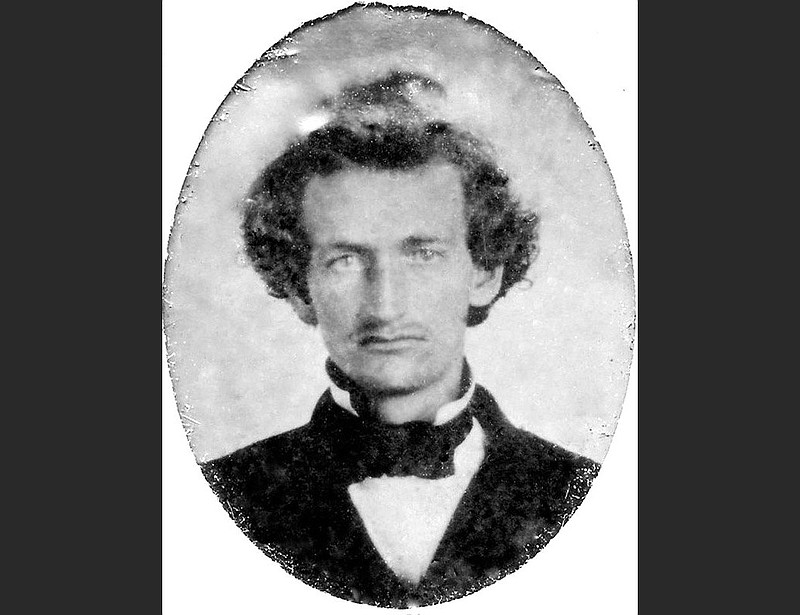An Arkansas politician during Reconstruction, James M. Hinds is one of the six members in the history of the U.S. Congress to have been murdered, as well as the highest-ranking government official to be killed in any state during the post–Civil War years.
James M. Hinds was born on Dec. 5, 1833, in Hebron, N.Y. He was the sixth child and youngest son of Charles Hinds and Jane Hinds (née Qua). He attended schools in New York, including New York State Normal School at Albany and Salem Academy, until moving west to attend law school. After attending law school in St. Louis, Hinds graduated from Cincinnati Law College in 1856.
Upon graduation Hinds moved to St. Peters, Minn., where he was admitted to the bar. He served as district attorney for 13 counties in Minnesota over three years and as a U.S. district attorney for a short period. In 1859, Hinds married Anna Pratt, a Maine native. While in Minnesota, the couple had two daughters.
The Hinds family experienced political unrest on the frontier during their years in Minnesota. Treaties — the most recent of which had been signed in 1851 — between the U.S. government and the Dakota tribe native to Minnesota began to fall apart. More people settled in Minnesota, making resources, food and land scarce. In 1862, damaged crops, and late payment of monies promised by the government to the Dakota to be used for credit with traders, caused widespread hunger for the Dakota. A Dakota foraging party attacked a family of settlers in August 1862, igniting the U.S.-Dakota War. When former Minnesota governor Henry Sibley led a relief party to settlers who were fleeing their homes, Hinds joined him. As part of the cavalry, Hinds served in the Minnesota River valley.
Ultimately, Hinds' service and professional skills led him to Arkansas. He and his family settled in Little Rock in June 1865.
The following year saw Hinds elected to represent Pulaski County at the Arkansas constitutional convention when it convened on Jan. 7, 1868. There, he was elected one of Arkansas' three congressmen following its return to the Union, and he served beginning in June 1868. During his time in office, Hinds helped introduce a bill for the sale of what is now Hot Springs National Park, aided in establishing agricultural colleges, and promoted the interests of Black soldiers. Upon the passage of the Reconstruction Acts, Hinds advocated the measures on a state level and helped to teach enfranchised Black men about their newly acquired rights as citizens. When Congress adjourned, Hinds visited his mother, whom he had not seen in more than a decade, and then proceeded to Fort Smith to attend the state Republican convention in August 1868. At the convention, Hinds declined renomination as he was planning to travel across Arkansas to gain popular support for the Republican Party.
By September, Hinds traveled to the southern portion of the state and had a hostile reception. In letters to his wife, Hinds described death threats and plots against his life during these travels. On Oct. 22, 1868, Hinds and Joseph Brooks planned to speak in Indian Bay in Monroe County but were delayed because they were denied travel arrangements based on their political affiliations.
Running behind schedule, they attempted to catch up with their group, which, they had been told, was headed toward Evans Place, approximately six miles from Indian Bay. The two traveled in that direction on horseback for about a mile or so down the road when the man who had given them directions caught up with them. The man, later identified as George A. Clark, fired his shotgun at Brooks and Hinds, the latter being hit in the back. With Brooks escaping the scene and Hinds' horse running off at the gunshot, Hinds lay on the road for about an hour before he was found. He identified his attackers before succumbing to his wounds. Clark, secretary of the Democratic Committee of Monroe County (and a member of the Ku Klux Klan), had reportedly made threats against Hinds and Brooks earlier in the day. He was never arrested or prosecuted for what was described as a political assassination.
Hinds' funeral procession in Little Rock marched from the Capitol to the railroad station. All businesses closed during the procession.
Hinds' remains were returned to Salem, N.Y., via railroad transport and interred there. He also has an honorary marker in the U.S. Congressional Cemetery in Washington.
— Amanda Stanton
This story is adapted by Guy Lancaster from the online Encyclopedia of Arkansas, a project of the Central Arkansas Library System. Visit the site at encyclopediaofarkansas.net.

